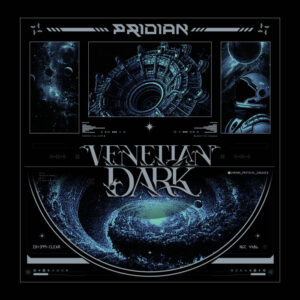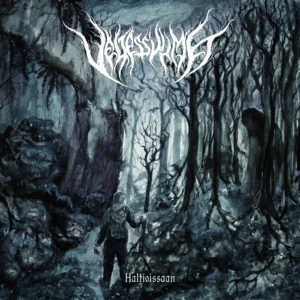AMON AMARTH Is Not Melodic Death Metal.
March 6, 2017
This tenant I hold has been a subject that I am long overdue in addressing. As a long-time fan of Melodic Death Metal, or MeloDeath as it is sometimes referred to, I have always found this labeling of AMON AMARTH to be false, and it has always bothered my strong sense of labeling and descripting. But in order to prove this, I will need to establish some data in the following areas. First, I must describe and provide examples of exactly what Death Metal is, and compare and contrast this with Melodic Death Metal. Next, I must establish that "Viking Metal" is real, and provide a description of this sub-genre. Last, I must indicate why AMON AMARTH fits better into this latter category than under the MeloDeath label. This shouldn't be too hard, right? Indeed, as this band which I find campy and overrated is adored by many Metalheads, and it is widely labeled as Melodic Death Metal, unraveling the layers of falsity will prove to be difficult. Furthermore, getting anyone to change their paradigm about this might be even harder, even in the face of hard evidence. So, if you have your mind made up before reading this, don't bother to go any further. But if you are open to the data and evidence that I have here, please read along.
Death Metal traces its roots back very far, mostly to America in the mid-1980's. Though, one cannot have the discussion without noting an early pioneer of Extreme Metal in general from the UK called VENOM. Death Metal was born of Thrash Metal for the most part. Though in early incantations, it didn't vary too far from its mother. Early US Death bands like POSSESSED and DEATH had a very raw sound where the deep growling or screaming vocals were a notch more extreme than what the Thrash bands were doing at the time. Eventually it morphed from there into its own distinct brand of music. Common sounds and themes included blast beat, aggressive drumming, down-tuning of guitars, little to no discernable melody, and image/lyrical themes around death, mutilation, corpses, etc. In the early 1990's though, European bands (Nordic in particular) spawned a new style, combining the traditional aggressiveness and brutality of Death Metal with the melodic sensibilities of NWOMHM bands like IRON MAIDEN. Central to this new style of music is melody, plain and simple. Sometimes this takes the form of a melodic riff, harmonized guitars and/or vocals, the use of keyboards and/or piano, a drawn out and sing-along chorus, and clean singing at times.
Is Viking Metal real? Well, according to a quick Google search of no less than 100 citations on the internet, it is. You can dislike the label, and you can dismiss the label, but according to many people, it is real. Some call it born of Black Metal, infused with Nordic Metal and Folk Metal, centered in Norse mythology and rituals. The great Encyclopaedia Metallum lists it as a sub-genre. "AllMusic" identifies Viking metal as a nickname for the 1990s Norwegian black metal scene, which the site describes as "noisy, chaotic, and often augmented by sorrowful melodies." Journalist Johannes Jonsson described the style as "slow black metal with influences from Nordic folk music." Lecturer Ross Hagen identifies Viking metal as a sub-genre of black metal, albeit one that abandoned black metal's Satanic imagery. According to Deena Weinstein, Viking metal bands often add "local cultural flourishes" such as traditional instruments and ethnic melodies. Aaron Patrick Mulvany considers it a category of folk metal, but with considerably less usage of "non-standard instruments". For the vocals, Viking metal incorporates both clean singing as well as the typical black metal screams and growls. Scholar Imke von Helden acknowledges that "There are difficulties in defining Viking metal, because the definition - apart from certain elements like anthem-like choruses - is not based entirely on musical features and overlaps with other metal genres. The music derives from the also Scandinavian-coined genres of black and death metal. Some bands, such as Unleashed AMON AMARTH, play death metal, but incorporate Viking themes and thus are labeled under the genre." Scholar Heather O'Donoghue also notes how Viking metal is defined more by its thematic material than musical qualities. She writes that "Viking metal draws on Norse themes not in a strictly musical sense - the work of groups such as Bathory is not by any means a mock-up of medieval music. Rather, it is in the band names, album titles, artwork of album covers and, especially, in the song lyrics that Viking themes are so evident." This is where I feel AMON AMARTH fits squarely. Though some scholars recognize that the label is difficult because it is not based entirely on sonic elements, but lyrics and themes, I believe we have more than enough evidence here to support this as a factual sub-genre.
This leads us to!AMON AMARTH. My contention is that they are a Death/Viking Metal band, and bear little resemblance to the Melodic Death Metal bands that pepper the landscape of their country-mates. At worst, they are a Death Metal band with Viking lyrics and themes. Every single one of their videos is a Viking battle for shit's sake. Ships, axes, swords, long beards, armor, battles and death all done to a soundtrack that seems perfectly fitting to the visuals. Watch an OMNIUM GATHERUM video by contrast and you will see beauty, colors, and life, because you cannot have the Death without the Melody to make it in this genre. Like any genre, there are grey lines at the boundaries. At the heavy end of the spectrum, we have bands like AT THE GATES, ARCH EMEMY, and HYPOCRISY to name a few. On the lighter end, we have bands like IN FLAMES and MERCENARY, who use a lot more melody than their counterparts. Straddling the genre dead center is the band OMNIUM GATHERUM, who are able to use the extremes like no other. At their fiercest, they spew deep, dark Death Metal as good as anyone. At their more mellow side, they write and perform melodies and harmonies with all the pop sensibility of a DEF LEPPARD.
For me, one of the most glaring differences between AMON AMARTH and most MeloDeath bands boundaries is the use of a big chorus. AMON AMARTH do not employ the big chorus enough as a way to push the melody. Another common component of Melodic Death Metal is plenty of twin guitar harmonies. This is another area where they fall short. What they have more often than not is a single guitar riff that, while it follows a melodic chord, is not just thick enough with melody and harmony to fit the label. Clean vocals are often used in this genre as well. Though in and of itself, the lack of clean vocals is not enough to disqualify a band from this genre label. Indeed, there are plenty of Melodic Death Metal bands who don't ever use clean vocals, though I would content that this only enhances the melodic aspects of the genre, which is sort of the point in the first place, isn't it? However, when it comes to AMON AMARTH, this is just one more nail in the proverbial coffin. Some additional evidence could be found in the utter lack of diversity and dynamics in their music. For example, there is no layering, no textures and they would trip over a piano or keyboards never having seen them before. Again, in and of itself, not enough to disqualify a band from this label. But!another nail. Finally, the proof is in the pudding as they say. When I hear AMON AMARTH, the Melodic Death Metal genre is just not what I hear. It's close however, and upon further examination of the evidence, I have to admit as a self-proclaimed music scientist and snob, it's closer than I had originally contended.
In sum, as I pour over this article again, and take a few more listens to some of their music, I proclaim my final evidence evaluation to be!circumstantial. In the matter of a court of criminal prosecution, evidence must be presented to the standard of "beyond a reasonable doubt." I don't think I have met that standard here. The standard that I believe I have met is "more likely than not." Call the margin of victory as small as 51-49 if you want, but I think I have presented evidence to this level. But please, any good argument must have counterpoints and be able to stand up to criticism, so I warmly invite you to do so, and so that I can finally have closure on this issue.
Dave "That Melodic Death Prog Snob Metal Guy" Campbell
Source:
More results...





















